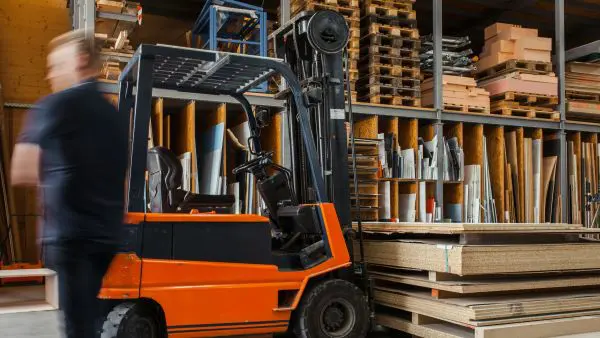Material banks, explained: could they be the path to a circular future?
Posted on: 12 August, 2024

Material banks could help reduce the enormous amounts of waste produced by the demolitions of buildings and infrastructure. Here’s how they work.
A wide array of different materials, components and products come together to create the buildings we live, work and interact with in our day-to-day lives.
When it comes time to deconstruct, redevelop or a demolish a building, these materials are often simply consigned to the landfill, with a select few being highlighted for recycling or preserved during the process of retrofitting. However, this process is no longer sustainable. As the climate emergency heightens, the construction industry is under significant pressure to reduce the emissions and waste that results from the building lifecycle.
This increasing pressure has fostered discussions around new processes, practices and philosophies in the built environment, with the concept of the circular economy and the reuse of materials a key theme in the future of sustainability. One discussion is how our buildings and infrastructure should be viewed as ‘material banks’.
What exactly is a material bank?
A material bank is a repository of construction materials recovered from an existing building that has been decommissioned, be it through redevelopment, demolition or other means.
This stockpile of materials would traditionally have been sent to a landfill, but if the potential for reuse is identified (through the use of material passports), they’re kept. They’re then listed on an online marketplace through which architects, designers and construction teams can bid on them for their own projects.
As Dr Graeme Larsen, Associate Dean – Sustainability and Programme Leader for the MSc Innovation Sustainable Built Environments, explained in Episode 5 of the BE Sustainable podcast:
Watch or listen to the full episode via:
How can buildings be treated as material banks?
In September 2015, Project BAMB – Buildings As Material Banks – was launched by 15 partners across 7 different countries in Europe. The purpose of this project is to ‘enable a systematic shift’ in the built environment ‘by creating circular solutions.’ This would be achieved by the incorporation of dynamically and flexibly designed buildings into the circular economy.
The idea behind Project BAMB and buildings being material banks is to treat a building like a bank of materials throughout the entire lifecycle – from design through to construction, operation and deconstruction. In tandem with both material passports and reversible design philosophies, buildings will become integral to the circular economy, with thought given to both how they’re constructed and deconstructed in their design.
Learn more: A guide to reversible building design (with 4 examples)
What are the benefits of treating buildings as material banks?
Eliminates waste
Treating a building as a material bank rather than solely a construction will have a significant influence on the entire building lifecycle, and help to reduce waste throughout.
For architects and designers, new structures can integrate principles of reversible design and design for disassembly/deconstruction, whereby parts and components of buildings can be removed without causing damage to the structure.
In conjunction with material passports, treating buildings as material banks means that many of the materials in a decommissioned building can be accounted for, reducing the amount of waste that ends up in the landfill.
Reduces emissions
Material banks can reduce the production of emissions and the use of energy from the construction process by providing easy access to a wealth of suitable, recycled materials. As these materials have already been produced, architects and construction teams can avoid creating yet more emissions during the construction phase of a project.
Fuels creativity
While it may seem like using recycled materials restricts an architect or design team’s ability to be creative, having access to a bank of materials opens doors to new creative possibilities. Architecture is a field that often requires problem solving, with the role of the architect being to design solutions to briefs within the parameters of both physical and legal restrictions. Using recycled materials may seem like another limitation at first, but it’s not something architects aren’t already used to.
Increases the value of buildings (and components)
The challenge of addressing ageing buildings isn’t just an issue for sustainability. In most cases of the end-of-life phase, waste and non-recycled materials are essentially worthless and will most likely be sent to the landfill. On the other hand, recyclable materials hold onto their value, which presents an attractive long-term option for building owners.
Establishing material banks isn’t without its challenges
The concept of material banks is compelling, but establishing it isn’t without its hurdles. The built environment can be slow to both embrace and implement change, and making material banks a reality on a larger scale requires significant engagement throughout supply chains.
As with material passports, there’s also currently no standardisation for the management of material banks, which can create challenges around implementation and inconsistencies between different material bank marketplaces.
There’s also the challenge around sustainability literacy, which remains an issue for the built environment. Without the appropriate knowledge around concepts of sustainability, it may be difficult to implement circular models like material banks effectively.
Learn more: What is the green skills gap (and why does it matter)?
Final thoughts
Making material banks a reality is undoubtedly a significant challenge. However, the enormous potential this concept presents in implementing circular thinking into the built environment simply can’t be ignored for a sector struggling to address its impact on the climate crisis.
Sustainability isn’t a passing trend – it’s here to stay and is constantly evolving. If you want to inspire and action change in your career, UCEM’s MSc Innovation in Sustainable Built Environments will give you the skills you need, both now and in the future.
Find out more: MSc Innovation in Sustainable Built Environments – University College of Estate Management





